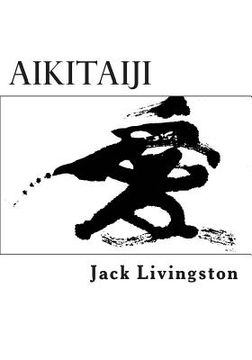Reseña del libro "Aikitaiji: Soft or Internal Martial Art (en Inglés)"
Aikitaiji is neither Aikido nor T'ai Chi Ch'uan as commonly understood. It's not anything new either. It's a compilation that I found useful after deleting things that didn't work for me. Aikitaiji is a two-point perspective on soft martial art. The best example to distinguish Aikitaiji is the way we engage in the cooperative but slightly competitive practice of Push-hands. Positive, playful competition adds realism (because your partner isn't just taking a dive). It's a direct encounter with flow when conducted in a playful manner. Aikido players could find proper Push-hands a very useful context for their practice. It makes a big difference when both sides agree to probe, push, lock and lose easily enough while putting up some resistance (it's very important to train relative to resisting opponents but not so much at first). The other main difference, one that could help T'ai Chi players, is that we have the option of using the joint-locking and throwing techniques I learned in Aikido (when it's natural) from within the context of T'ai Chi Push-hands. Aikido has joint-locking, throwing/falling and floor exercises. T'ai Chi has the stances and forms that embody the choreography of optimal biomechanical power. Push-hands develops the improvisational and intuitive faculties. I used material from one art to fill in the gaps I found in the other, following soft principles into the conflux of energy/force where responses arise spontaneously and appropriately from an expanded menu of deeply memorized options. Many people who are primarily interested in spiritual/mystical stuff (do they still call it "New Age?") will find that proper martial art is very well suited for self-transcendence. One thing neuro-science is discovering is that we can follow the same learning process to cultivate the body of proper martial art at the same time that we activate the mystical parts of the brain. The same internal/physical process leads to development of ch'i and engages the creative, intuitive and mystical faculties. The pre-condition of our full human potential (which is huge) is a deeply engrained feeling of safety. We need to know that we're safe, competent to defend ourselves, before we can be really free. After we fulfill the pre-condition of security then we can follow the course characteristic of loving (not combative) souls, evolving along the art's path into the mystical/spiritual flow of the cosmos. Confidence in our ability to protect our selves is the same confidence, the same warrior's spirit that carries us to the crossroads we share with infinity. And it's the same confidence that allows us to leap into the unknowable collective universal consciousness, releasing our own unsuspected powers. The work of art that we create in Aikitaiji is our own civil, mature human beingness with the option of unity-on-demand. The most malignant threat to our general health as well as our most vital ally reside in our minds and conscious bodies, and the dark wins by default when we don't recruit, train and empower the proper "soft" or internal warrior. Proper martial art isn't merely destructive. A ferocious martial artist I knew said that it was his very violent training that exposed his heart and nurtured his fearless ability to love. At a certain level we experience yin and yang as two aspects of the same event. Training our internal energy as a healing agent enhances it. The more we use it affectionately to augment others the more it motivates our own immune system. Destructive power and healing power are similar (but not equal) forces and they depend on the consciousness wielding it. We aspire to feel safe and affectionate, relative to all others, and in the process we integrate the world we discover inside our selves with the flow of the cosmos. We grow more virtuous as we become less fearful. We explore the highest (deepest) regions of our inner world, identify with the resultant power, and extend it outward as a

